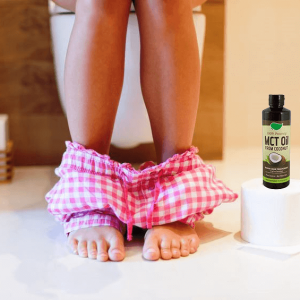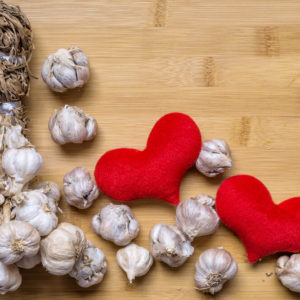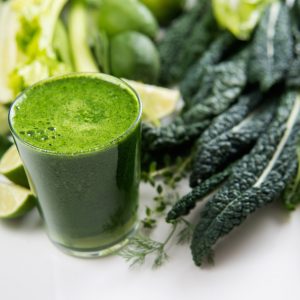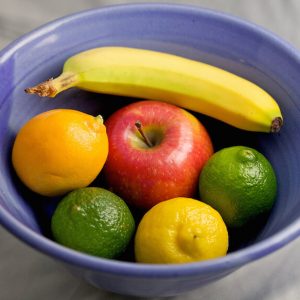
With spring in the air, the birds are returning, and many people look forward to refilling their feeders to attract more of the bright, feathery critters to their yards and patios. Many people take particular delight in watching hummingbirds, with their supersonic wing speed, zipping about their garden like tiny Cirque de Soliel acrobats. They use special feeding nectar to help coax more of these delightful flutter-bys to their abodes.
As well-meaning as many bird watchers are, they unwittingly may be poisoning their feathered friends. Many hoping to attract the birds to their area use a special nectar containing a red dye, which many mistakenly believe attracts the birds visually. However, in doing so, they may poison the creatures they dearly love, causing them to grow tumors or starve and perish.
The Issue of the Red Dye
The Happinest Wildlife Rehabilitation and Rescue recently discovered how toxic red dye nectar is to hummingbirds [1]. The group recently took in several ailing hummingbirds suffering from symptoms such as lethargy and an inability to fly. Rescuers noticed the birds’ droppings all had a distinct red tint.
Suspecting the red dye in the commercial nectar given the birds previously, the rescue team began feeding the hummingbirds a diet of clear sugar water, as well as a prescribed protein nectar. Sadly, not all the hummers made it.
Fortunately, though, with rest and care, the majority of the birds returned to normal within 48 hours of rest and their new diet. The team at Happinest reached out to other rescue groups to see if others could corroborate their findings. Indeed, several animal rehabilitation organizations indicated they also experienced hummingbird sickness and death related to the red dye.
Happinest took to social media to spread the word and warn fellow hummingbird enthusiasts. The post went viral, with over 100,000 shares. Other rescues, bird-watching groups and animal lovers continued to warn others of the dangers of the red dye.
A lot of anecdotal evidence strongly suggests a connection between the dye and the harm being done to hummingbirds, especially considering many professional rescuers have reported the same health effects [2]. Why take the risk of harming these magnificent creatures by continuing to use red dye nectar?
Other Potential Hazards for Hummingbirds
Those who ignore the need for properly caring for their hummingbird feeder may do harm even if they refrain from using red dye. Hummingbird feeders require regular cleaning lest they become contaminated with black mold and other fungi that can harm these beautiful creatures [3]. Mold and fungus can cause lung infection and makes the birds’ tongues swell, leading to a slow, excruciating death from starvation.
When purchasing a hummingbird feeder, seek one that comes apart easily for cleaning. Once a week, remove the nectar from the feeder and wash it thoroughly with mild soapy water and a washcloth or sponge. Allow the feeder to dry before reassembling it. Weekly washes help prevent dangerous mold and keep birds safe.
How to Make Natural Nectar for Your Feeder
Fortunately, those who adore hummingbirds can easily make their own nectar for hummingbirds [4]. Simply mixing sugar and water alone is insufficient — the water must be brought to a boil to kill any bacteria.
Here are the steps you’ll want to follow to make the perfect sugar nectar for our beautiful feathery pollinators:
1. Bring 4.5 cups of water to a boil. Let it boil for about 2 minutes. Try using filtered, fluoride-free and chlorine-free water. Boiling will not remove fluoride, but it will remove chlorine, so I always suggest using filtered water that is free of these contaminants.
2. Take the boiling water off the heat and measure out 4 cups. Add 1 cup of unbleached pure cane sugar to the 4 cups of freshly boiled water. You don’t want to boil the water and sugar together as this can concentrate the mixture too much, which can be toxic to hummingbirds.
3. Stir sugar and water until completely dissolved.
4. Allow the mixture to cool thoroughly before adding it to a glass feeder.
5. Do not add food coloring, as the red color on most feeders attracts birds effectively (and red dye is toxic to hummingbirds).
The correct ratio is 1 part sugar to 4 parts water (aka. 1 cup sugar to 4 cups water). Also, make sure the sugar is pure cane sugar.
Hummingbirds cannot metabolize other sugars like those mentioned below. They can cause kidney damage/failure and a slow, painful death.
DO NOT USE:
– Dyes
– Organic/raw sugar
– Artificial sweeteners
– Honey
– Koolaid
– Juices
– Sports Drinks
– Brown Sugar
– Maple Syrup
– Any type of syrup
– Store bought nectar
What You’re Really Protecting When You Protect Hummingbirds
Given the beauty of hummingbirds, is it any wonder that humans have an interest in attracting them to their properties? And when we take the time to make sure we’re doing it right, we help keep alive a historically diverse and captivating bird species. Many myths and legends have arisen about this fascinating creature. In many areas of the Americas, storytellers spin yarns as colorful as the birds themselves.
In many Native American cultures, the hummingbird represents positive feelings and good fortune. In Cherokee tradition, hummingbirds serve as a symbol of improved health for those suffering any host of ailments [5]. One legend tells the tale of an old woman who needed a heavily guarded plant to survive. Only the hummingbird was fast enough to harvest the nectar and bring the woman back from the dead.
The Aztecs considered the hummingbird as a symbol of rebirth, and worshiped the bird as their god of the sun and war. The Mayans believed God created hummingbirds from the leftover bits of all the other birds he made. They also felt the very first wedding on earth was between two hummingbirds.
One myth surrounding hummingbirds is they lack feet. Hummingbirds do have feet, but they cannot walk, only shuffle sideways when perched. Hummingbirds lack a sense of smell, but they have very sharp vision, which is why the color red attracts them. Hummingbirds have fewer feathers than any other avian friends, which aids in their ability to fly so quickly. Their feathers are very compact, like a penguin’s.
Hummingbirds fly 30 mph — and during a dive, they can reach speeds as high as 60 mph when seeking a mate [6]. These avian Usain Bolts can flap their wings up to 200 times in one minute. Because hummingbirds spend most of the day hovering, they burn a tremendous number of calories, meaning they need to consume a lot of sugar water to keep their energy high.
Over 300 species of hummingbird exist, but the colorful birds only grace the western hemisphere [7]. Twice a year, hummingbirds migrate, covering up to 2,000 miles. The birds have incredible memories, allowing them to remember where their favorite food flowers are.
Hummingbird eggs are the smallest in the bird family at only half an inch long. They have a relatively short gestation period, requiring less than three weeks to hatch. Hummingbirds do not mate for life, and once the female lays eggs, she fights off the father and any other males getting too close to the nest.
These captivating birds have a beautiful and unique background, and we should take every measure to keep them thriving!
Help Hummingbirds Safely
Hummingbirds are fascinating to watch and to learn about, so it’s no wonder many people do what they can to attract them to brighten their patios and garden with their riotous colors. However, bird enthusiasts should exercise caution by avoiding commercial nectar containing red dye. By keeping our feathered friends safe, we can continue to enjoy their beautiful presence.









Carly, I’ve been unable to find sugar due to the Covid situation for the Hummingbirds, but there were Nature’s Song Nectar still available at my local store. The red dye was Cochineal which wasn’t the petroleum based everyone’s warning not to use, but I figured this was better than nothing. Do you think this will harm them, until I can get sugar?
Yes, that should be okay to use, as I believe it is a natural derivative.
Hi Carly,
One of the hummingbird is loosing its feathers.
Is there something I can do?
Also, do you know if bottle water is okay.
I don’t have a fluoride filter.
Thanks,
You have a pet hummingbird? Or you noticed the wild one losing feathers? Bottled water is okay. Just make sure it’s not dasani or another company that adds stuff to their water. I am not sure what to do in the case of a hummingbird losing feathers – I’d probably ask someone who is a wild life specialist.